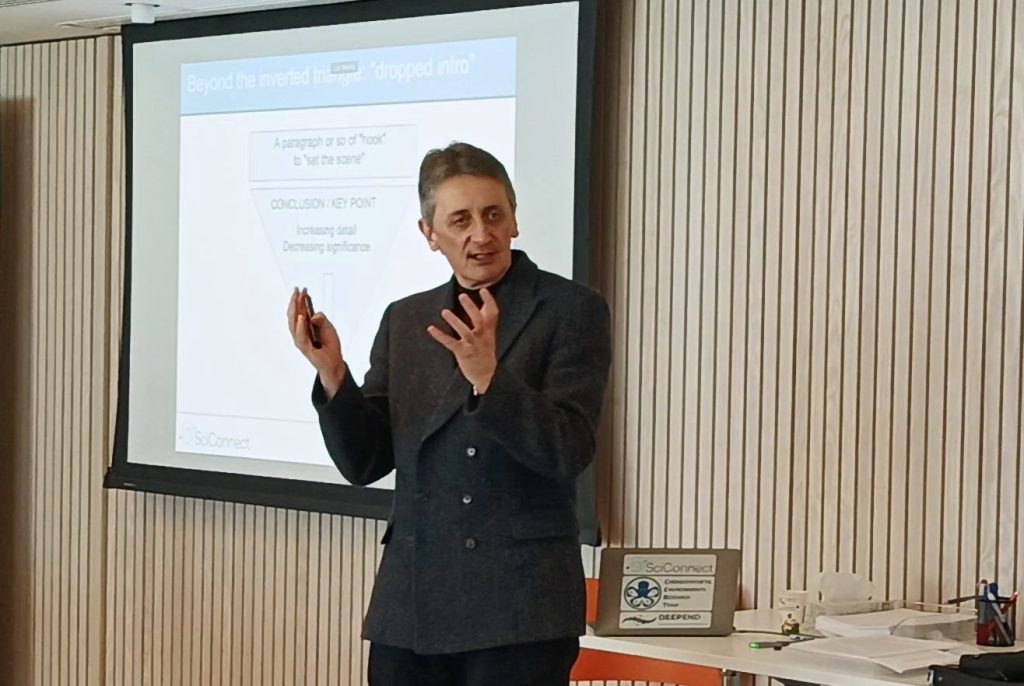How would it be like to have your research appearing in the famous journal Science? For most of us it seems an unreachable dream. The same was the case for LIFT member Christian Nawroth and his colleagues, until recently. His work on goat cognition was picked up by Science and has thereafter received a wealth of media attention. Having an article in Science does not happen by sheer coincidence – there is a science to it.
Bringing research outcomes to the public does, in most cases, not happen by itself. No one will read full scientific papers if they are not a scientist themselves. In order for research articles to become palatable to the general audience, and to attract attention, the story needs to be converted to a news article. But how to do this?
In a Storytelling training, organised by COST, Science Communication Coordinators of COST Actions were taught how to write news items and popular articles. The Science Communication Coordinator of COST Action LIFT, Irene Camerlink, joined the meeting in Brussels. The training was given by Prof Jon Copley, who has extensive experience in science communication. He has been reporter for New Scientist and worked amongst others with Sir David Attenborourgh on Blue Planet.

Prof Copley explained that news items are typically written following the Inverted triangle structure, which is opposite to the Academic triangle used for scientific publications. Scientific publications will start with an introduction and then continue into the methods, results, and discussion, with the conclusion at the end of the article. The Inverted triangle, on the other hand, starts with the conclusion or key-point and then gradually increases in its details about the research or story.

Applying this technique will catch the reader’s attention and will make directly clear from the start what it is about and why the reader should care. It does require researchers to think and write differently. The traditional writing structure has to be changed and any jargon has to be avoided. The writer also has to avoid words that can have a different meaning to the audience, such as ‘model’, ‘paradigm’ and ‘significant’.
With the gained knowledge, researchers can write press releases about their research – or about their COST Action. Writing it using the inverted triangle makes the article more likely to be picked up by the press. Christian Nawroth, who works as researcher at FBN in Germany, is a seasoned science communicator and it is therefore not fully a surprise that the media highlighted his results. Nevertheless, Christian was surprised: “It was completely surreal, seeing that story on the cover of Science. Shortly after, media requests were pouring in”.
At the COST training, the Science Communication Coordinators were warned by Copley: “When you make a press release you have to be prepared for the media attention that may follow”. This was indeed what happened for Christian: “National and foreign newspapers, broadcasting, and national television wanted to cover the story. Many of them wanted to visit us, so there was a lot more interaction during these requests compared to more “traditional” press releases”. Christian also points out the importance of such science communication: “We hope that this might serve as a great push for farm animal cognition and emotion research on an international level, increasing the awareness about this topic for other research fields and society, too”.
by Irene Camerlink




